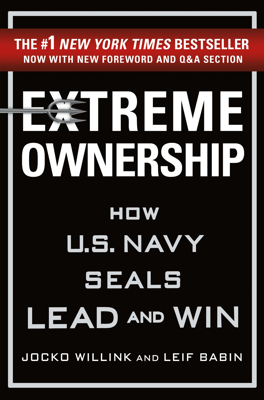No Bad Teams, Only Bad Leaders
Setting and Context
Leif Babin recalls his experiences at Basic Underwater Demolition/SEAL Training (BUD/S), particularly during the grueling Hell Week where teamwork and leadership are crucial for survival and success. Students are divided into boat crews, and their performance in races directly influences their treatment and morale.
The Leadership Experiment
One boat crew, Boat Crew VI, persistently underperforms, exhibiting disunity and lack of cooperation, ranking consistently as the lowest among all crews. Observing this, a Senior Chief proposes an experiment to switch the leaders of the best-performing crew (Boat Crew II) and the worst (Boat Crew VI) to determine the impact of leadership on team performance.
Immediate Impact of Leadership Change
The result of the leader swap is astonishing. Boat Crew VI, under new leadership, quickly rises to outperform all other crews, winning subsequent races. This dramatic turnaround from worst to best underscores the profound effect leadership has on team performance and unity. Conversely, Boat Crew II maintains high performance, albeit slightly less dominant, indicating the strong foundations and habits instilled by their original leader.
Leadership Principles Emphasized
- Importance of Leadership: Leadership is portrayed as the single most critical factor in a team's performance.
- High Performance Through High Standards: Effective leaders instill a belief in success and set high standards; they take ownership of failures and push for continuous improvement.
- Culture of Extreme Ownership: Exceptional leaders foster a team culture where every member adopts a mindset of Extreme Ownership, continuously striving to uphold high performance even when leadership changes.
Application to Business
In a business seminar with a company grappling with leadership challenges, the principle of "No Bad Teams, Only Bad Leaders" is shared. The leader of an underperforming department refuses to adopt the principles of Extreme Ownership, blaming external factors for his team's failures. The company CEO, recognizing the importance of effective leadership, ultimately replaces the resistant leader. Under new leadership, the department and company begin to exhibit improved collaboration and performance, thereby validating the impact of leadership quality on team success.
Conclusion and Key Takeaway
The chapter emphasizes that leadership quality directly correlates with the performance and success of a team. Babin illustrates through both military and business examples that a real leader believes in their team's potential, cultivates a culture of responsibility and improvement, and leads by example, thereby transforming poor performers into high-performing teams.
